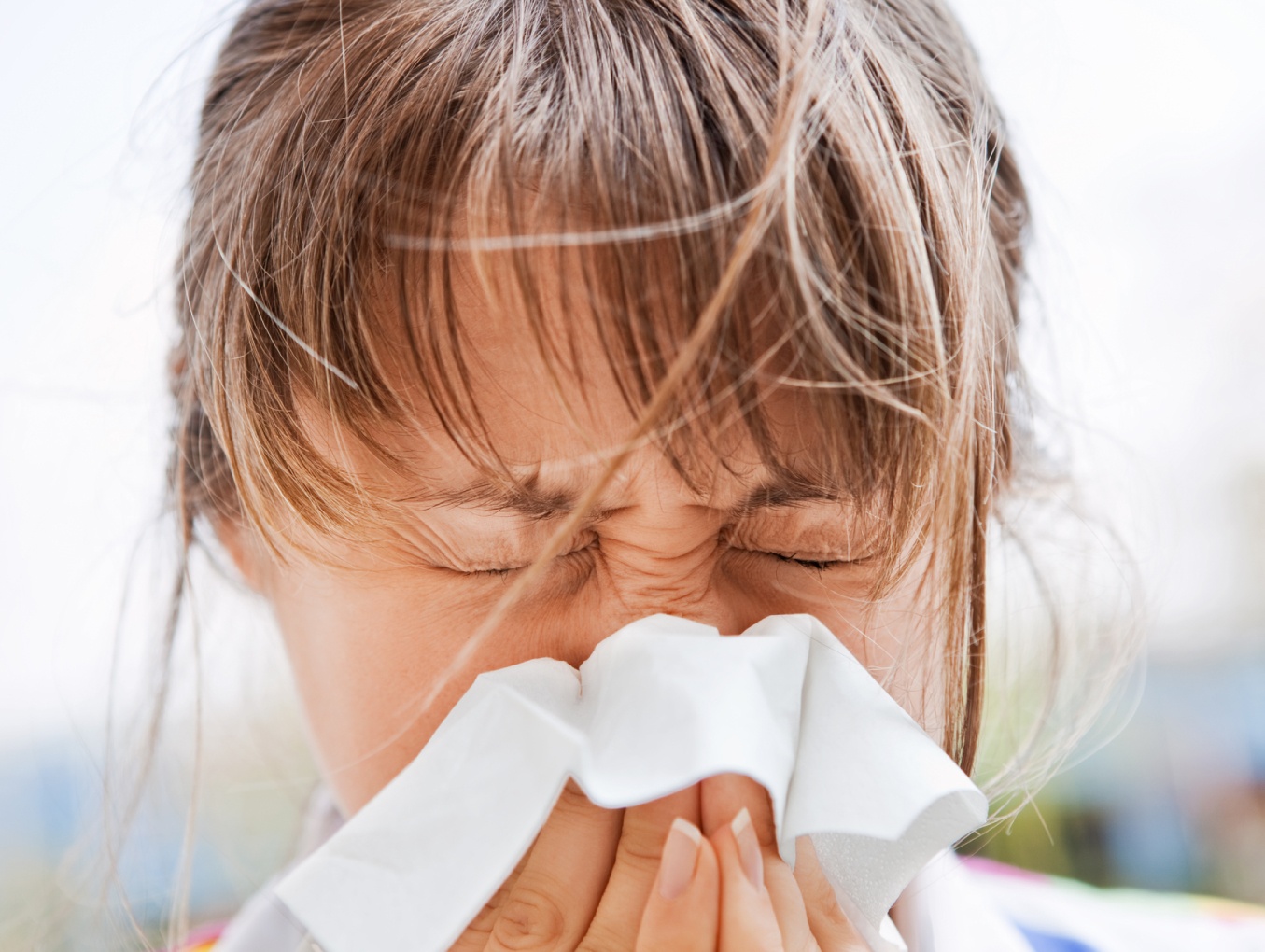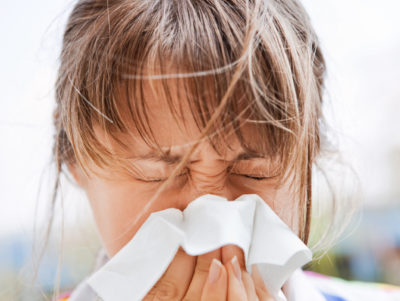
Ancient Ayurveda Recipes for Healthy Living
by Vanita Dahia What did our ancestors eat? One ancient

by Vanita Dahia

Allergic reactions of progressively increasing not only to food but also to environmental pollutants, volatile solvents, dust mites, plant pollens and mould.
An allergy is a hyperactive response of the immune system which will initiate a histamine mediated inflammatory response. Typically, symptoms may occur within minutes to several hours of exposure.
Symptoms may include bloating, red eyes, itchy rash, sneezing, runny nose, and shortness of breath or swelling. When the symptoms are severe, airways may to close up or tongue to swell, is called anaphylaxis. On a day-to-day basis, food intolerances or sensitivities manifest as a delayed reaction, typically presenting with gastrointestinal symptoms such as bloating or nausea.
Food types that account for most of the allergic reactions are eggs, milk, peanuts, tree nuts, fish, shellfish, wheat and soy.
IgE antibody production is an immediate hypersensitivity to specific food. The reaction is usually immediate and severe. Symptoms may include swelling or itching of the throat, mouth or tongue, nasal congestion, wheezing, abdominal pain or anaphylaxis.
IgG antibody responses represent a delayed reaction following exposure to the antigen. Typically, symptoms may include bloating, rash, headaches, sinus conditions or low energy.
IGA mediated Ig response is confined predominantly to irritation of the mucosal membranes of the gastrointestinal tract, respiratory tract or sinuses. Conditions of leaky gut, poor gastrointestinal integrity, IBS or IBD may exhibit an IgA antibody response.
Environmental pollutants and allergies have become growing toxic concerns in immune function. Common sources of allergens such as pollution, pollen, dust, mould spores, animal hairs, perfumes, volatile solvents are affecting more people as we lead synthetic and sedentary lifestyles.
The immune system is incapable of protecting against repeated at cumulative exposures of EMF exposure as in digital and Wi-Fi loading, smart boxes, together with the growing exposure of synthetic colors, preservatives, chemicals in food and topical agents.
Symptoms to pollutant toxic exposure are similar to that of an IgG reaction to foods but can be much more debilitating particularly in an immunocompromised state.
Mould spores are common inhaled allergens of fungal origin which become airborne and affect nasal and respiratory passages. Mould spores produce toxic chemicals called mycotoxins which are released into the environment and can infest buildings, vehicles and food.
Mould can be found almost anywhere and can grow on any substance provided there is sufficient moisture and oxygen present. Typically, mould is found in wet buildings, bathrooms, kitchens, roof leaks, plumbing leaks or high humidity areas.
Mould releases biotoxins into the body which and which alters the entire immune system, endocrine and nervous systems. Most mycotoxins suppress immune system and inhibit the nervous system leading to chronic inflammatory response syndrome is (CIRS). When the immune system is weakened, it opens the door to pathogenic microbes such as Candida, bacteria, parasites or viral infections.
Symptoms linked to mycotoxins exposure may include flulike symptoms, chronic fatigue, immune dysregulation, depression, and other neurological conditions, or liver damage.
Pathology tests for foods, mould, chemicals, environmental chemicals, colours and preservatives are available to assess IgG, IgE, IgA exposure. In addition, testing for a range of environmental pollutants such as volatile solvents, chlorinated pesticides, PCBs, organophosphates together with mould exposure can be measured in a blood or urine sample.
Eliminate the source of exposure
Once the offending allergen has been identified through testing, it is important to eliminate or reduce exposure to that allergen or mould. Mould spores will not grow in the absence of moisture, so controlling moisture is important to preventing further mould growth.
Bind toxins and eliminate
Specific plant fibres or binders have the ability to carry these toxins out of the body via elimination channels. Fibre helps to increased transit time of toxins through the intestine, binding the substance and lessening their contact time with the intestinal mucosa. Binding agents such as Cholestyramine, diatomaceous earth, bentonite are some of many agents used to bind and chelate the toxins. Juicing with parsley, celery and cilantro (Chinese parsley) have been known to be beneficial food groups to aid chelation and detoxification.
Liver detoxification
Detoxification of allergens and mycotoxins occurs through the liver, gallbladder and kidneys. Powerful botanical herbs, amino acids and nutrient support for the liver can assist in strengthening both phase 1 and phase 2 of liver detoxification and eliminating toxins. Herbs such as Dandelion, Bupleurum, Milk thistle, Shisandra are effective in supporting liver detoxification together with specific amino acids such as glutamine, taurine, cysteine, glycine with appropriate vitamins.
Rebalance the immune system
Mould toxins have a tendency to inhibit the immune system in an effort to prevent detection. Those with chronic mould exposure and chronic inflammatory conditions have poor immune systems and often harbour low grade bacterial or microbial infection that may remain undetected, which further contributes to chronic fatigue and inflammation. Transfer factors made by immune cells during infection provide powerful defence against foreign invaders, mycotoxin elimination and improve immune responses.
Support adrenal function
Immune dysregulation puts a great deal of stress on the adrenal glands which in turn affects hormones and thyroid function. Chronic mould exposure may have inefficient immune systems that will impair HPA axis functioning which contributes towards adrenal exhaustion and chronic fatigue.
Energy (ATP) or mitochondrial function
Mould and mycotoxins bind to DNA and RNA altering protein synthesis and act as potent mitochondrial toxins. These toxins inhibit the capacity of the mitochondria to produce energy in the form of ATP.
Gastrointestinal function
As the immune system predominantly resides in the gut, the integrity of the intestinal lining and mucosa may be impaired due to toxicant exposure. Nutrients such as Slippery Elm, marshmallow and glutamine can assist in improving gastrointestinal health by providing fuel to the intestines and rebuilding, repairing and improving mucosal production. Probiotics and prebiotics may aid in repopulating the gastrointestinal tract, thus improving immunity in the gut and in so doing, inhibit microbial replication.
Inflammation support
Chronic inflammation is the common denominator in disease caused by mould and other fungi. The toxins produced by these microorganisms cause the innate immune system to respond to those foreign antigens resulting in pain and inflammation.
Antimicrobial support
Once the microbes have been identified as pathogenic, appropriate anti-bacterial, anti-viral or anti-parasitic treatment may be used to control the pathogenic populations.
Nervous system support
Most immunocompromised patient may exhibit some neurological symptoms ranging from anxiety, stress or depression. Identifying neurotransmitter imbalances and balancing the neural pathways with nutrients can assist in alleviating neurological symptoms caused by mould or fungal toxicity.
Oxidative damage
Mycotoxins, biotoxins, and gliotoxins create oxidative stress. Free radicals inhibit antioxidant signalling pathways involved in detoxification. A diet rich in plant foods or antioxidants is recommended.
Test for Mould and Biotoxins.
Contact us for further information.

by Vanita Dahia What did our ancestors eat? One ancient

Have you ever heard of anyone preventing their memory decline

How to Stop Indigestion and Acid Reflux by Vanita Dahia

Copyright © Vanita Dahia 2025. All rights reserved.